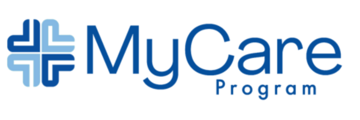Brief Overview: According to NIDDK, “Primary biliary cholangitis is a chronic disease in which the small bile ducts in the liver become inflamed and are eventually destroyed. When there are no bile ducts, bile builds up and causes liver damage. Over time, this damage can lead to liver scarring, cirrhosis, and eventually liver failure.” Primary biliary cholangitis used to be referred to as primary biliary cirrhosis.
Prevalence: According to UpToDate, “Primary biliary cholangitis (PBC) is rare, with a reported prevalence of 19 to 402 cases per million persons.”
Etiology: The exact cause is unknown. PBC is believed to be an autoimmune disease, and environmental factors are thought to play a role as well.
Risk Factors:
- Female
- Age 30-65 years old
- Family history of PBC
Commonly Associated Conditions:
- Sjogren’s
- Autoimmune thyroid disease – Hashimoto’s
- Systemic sclerosis
- RA
- Raynaud’s phenomenon
- Autoimmune hepatitis
Common Medications:
- UDCA
- Obeticholic acid or a peroxisome proliferator-activated receptor agonist (elafibranor, seladelpar, fibrates) if needed
Common Labs, Imaging, and Tests:
- Blood tests: Liver biochemical and function tests, ANA, CBC, Antimitochondrial antibodies (AMA), Lipid panel, CMP, Anti-thyroid antibodies
- Liver biopsy
- Imaging: RUQ abdominal ultrasound, magnetic resonance cholangiopancreatography (MRC), endoscopic retrograde cholangiopancreatography (ERC)
- DEXA scan to screen for osteoporosis
Common Symptoms:
- Sometimes asymptomatic
- Fatigue
- Pruritus (itching)
- Abdominal discomfort (RUQ)
- Dry skin
- Painful joints
- Weight loss
Common Treatments:
- Medications (see above)
- Immunizations – Hepatitis A and B vaccines if needed, pneumonia vaccine, and any other age-appropriate vaccinations
- Avoid alcohol
- Liver transplant may be indicated
- Management of symptoms and any underlying conditions
Physical Findings:
- Often normal physical exam
- Hyperpigmentation, jaundice, xanthelasmas, excoriation
- Hepatosplenomegaly
Potential Complications and Contraindications:
- Progression to cirrhosis
- Hepatocellular carcinoma
- Metabolic bone disease – osteopenia, osteoporosis
- Malabsorption
- Steatorrhea
- Hypercholesterolemia
- Portal hypertension
- Avoid alcohol
General Health and Lifestyle Guidance:
- Do not take any vitamins or supplements without speaking with your healthcare provider first
- Avoid alcohol intake
- Stay up to date on all immunizations and vaccines as recommended by your healthcare provider
- Make sure to follow up with all healthcare providers and specialists as directed and complete all required testing. Long-term monitoring will be needed, including bloodwork and imaging studies periodically
Suggested Questions to Ask Patients:
- Have you been experiencing itching or fatigue that’s hard to explain?
- Do you have a history of autoimmune or thyroid conditions?
- Are you monitoring bone health with your provider?
- Do you have symptoms like dry mouth or eyes, or bloating?
Suggested Talking Points:
- This condition is typically managed by a hepatologist
- Report any new, worsening, or persistent symptoms to your healthcare provider
- Consider joining a support group
Sources:
- UpToDate
- https://www.niddk.nih.gov/health-information/liver-disease/primary-biliary-cholangitis/definition-facts#who
